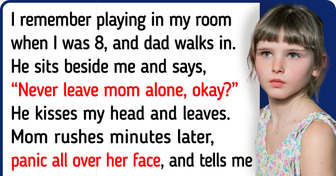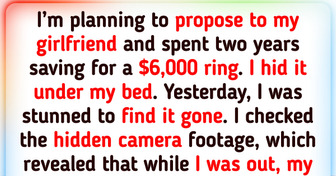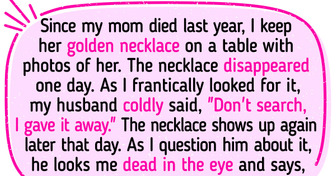I Discovered the Shocking Reason My Fiancé Decided to Marry Me
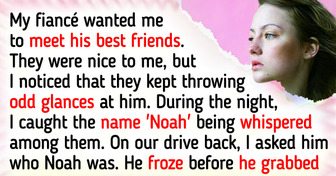
Try to imagine what it would be like if you woke up one day and everything around you was pink. And I mean literally, not just having a “think pink” vibe. Everything from your walls to your bed, desk, armchair, and even the clothes you wear would be rosy. Would you be able to live in such a world for a whole week?

Your first thought might be, “Is there something wrong with my eyes?” For most people, the answer is no. Even if there was something wrong with your vision, the chances are you wouldn’t end up seeing just one single color for the rest of your life.
Most people who are color blind are born that way, even though there are rare cases in which you can develop this condition later in life. And even those people who are totally color-blind see the world only in black, white, and gray. Most people with color blindness have problems perceiving certain colors. Their greatest difficulty is distinguishing the shades of the same color.
But let’s get back to our pink world, shall we? Is pink a special color for our brain? When you think about pink objects, you most likely associate them with emotions like love and kindness. In some cases, looking at the color pink for longer periods of time can actually make people feel more agitated. In sports, teams have been known to paint the opposing team’s locker room pink in an attempt to decrease their energy and performance. This tactic was implemented by an American coach who believed the all-pink room would mess with the minds of the opposing teams.

What if I told you that this specific shade of pink you woke up to had special powers, though? In the 1970s, a scientist named Alexander Schauss found a color that made people feel calm and relaxed. After lots of experiments to test the effects of different colors on people’s behavior, he found this specific color which he named the Schauss Pink.
His study showed that when people looked at a bright color, they lost strength in their muscles. But when they looked at the color blue, their strength returned to normal. The researcher talked about this in public lectures and even showed it on TV. He invited a bodybuilder and concluded that they could not do a single bicep curl after staring at the pink color.
Schauss was so sure of his discovery that he even suggested that prisons should paint holding cells pink to calm people down. Two officers at a US prison tested this idea by painting one holding cell pink and found that some inmates became calmer after being in the pink cell for 15 minutes.
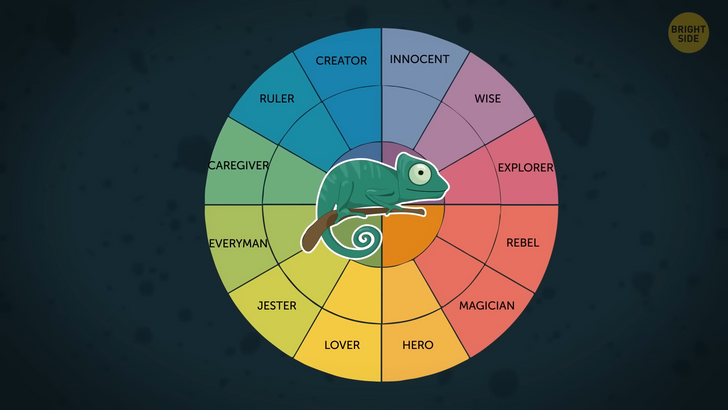
In any case, Schauss’ original research hasn’t been proven to be true by the following studies, but that doesn’t mean you can’t test it out for yourself. There’s no way to tell how your brain might react to living in a pink world for a day, a week, or even a whole month. It all has to do with your previous experience with this color. If it was a happy one, you might actually like living in a pink environment. However, it may be hard on your eyes after a certain point.
But we can’t say that the colors we surround ourselves with don’t affect us. Carl Jung, a famous Swiss psychoanalyst, developed a theory of color psychology, also known as “Jungian Color Theory.” He believed that each color meant something different, somewhere in the back of our mind, and had the power to reveal deeper thoughts.
He thought that colors could be used to understand an individual’s innermost thoughts and feelings. For example, he considered the color blue to be formal and precise, while green made people feel relaxed and patient. While looking at the color yellow, people became more sociable. And if you liked the color red, it meant you were competitive and strong-willed.
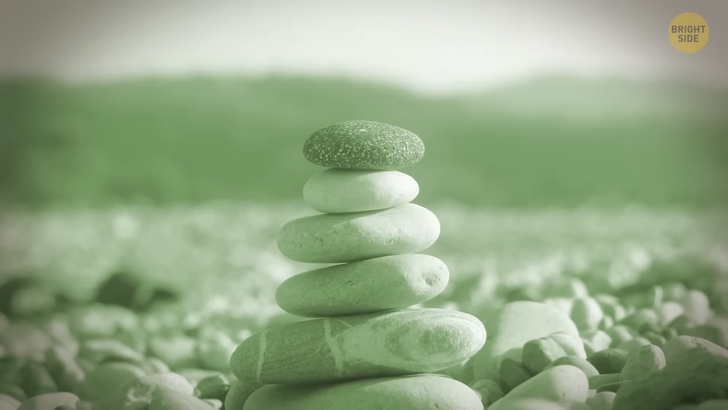
Pink isn’t the only color people have studied to see its effects on the brain. Let’s take green, for instance. Would you feel better living in a green world? Well, looking at this color can actually help you focus better. Studies have shown that people who take short breaks to look at pictures of green things, like trees or grass, concentrate better on boring tasks and make fewer mistakes. This is because green is a soothing color that is easy for our eyes and brain to see. I mean, it is the color we often find in nature, so it’s no wonder most of us find it soothing.
When it comes to red and orange, we should use these in moderation. So, no orange house for me, thank you. These colors can make you feel more energized and active, but too much can be bad. Researchers concluded that being surrounded by red or orange for long periods of time can make us fussy.
Let’s not forget about blue. It can make you feel calm and rested, but it can also make you feel gloomy, especially those darker shades. Waking up in a blue world might come with its own set of problems, depending on the shade.
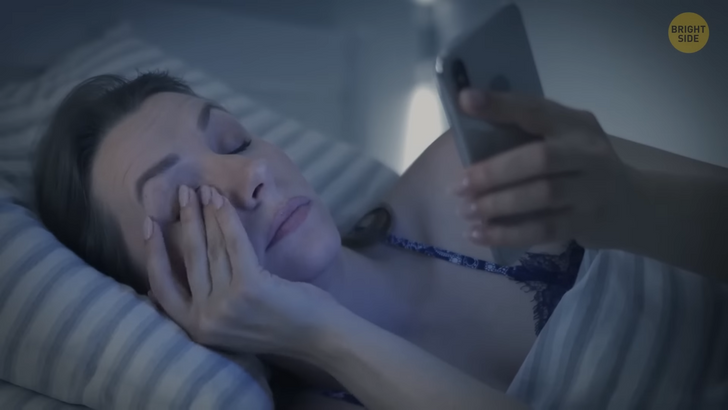
Then there’s the problem with blue light. It’s the type of light screens emit. At times, it can be bad for your sleep because such light can trick your brain into thinking it’s still daylight. It can make it hard for your body to produce the hormones you need to fall asleep at the right hours. To avoid these issues, it’s a good idea to avoid blue light screens for at least an hour before bed.
How about our eyes? Is staring at the same color for longer periods of time any good for us? Not really. If you look at one color for a long time, for starters, it can change the way you see other colors. Back in the day, people used old computer screens that featured a lot of green hues. Because they were exposed to this color a lot during a normal working day, they would end up seeing everything with a purple tint for a while after they stopped using the computer.
The explanation is simple: the part of the eye that was responsible for seeing green got tired. It got compensated by other parts of the eye that were more rested — those responsible for the red and blue hues. What do you get when you combine red with blue? That’s right, purple! These days, most people use computer screens that are white with black letters, so this problem doesn’t happen as much.
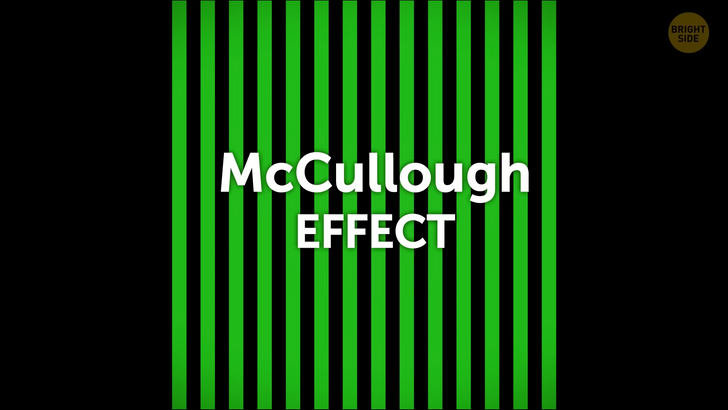
This change in our eyesight is also explained by the McCullough effect. It’s a phenomenon that happens when people perceive a change in the color of an object after it has been looked at for a long period of time. In 1965, Celeste McCollough found out that if you looked at colorful stripes for too long, it could affect how you saw things for months.
Her experiment had people looking at colorful stripes, then at black and white ones. If you do this for long enough, you’ll end up seeing the monochrome lines in color, too. Just like how a camera flash can make your vision go blurry for a bit, this effect can last for a long time if you look at the stripes for too long.
Does the color you stare at make any difference to your eyesight? Well, not really. There is no evidence to suggest that a certain color can trigger the McCullough effect. It’s rather caused by a combination of factors, like changes in the way the brain processes visual information, fatigue of the eye muscles, and changes in the way the eye’s retina responds to light.
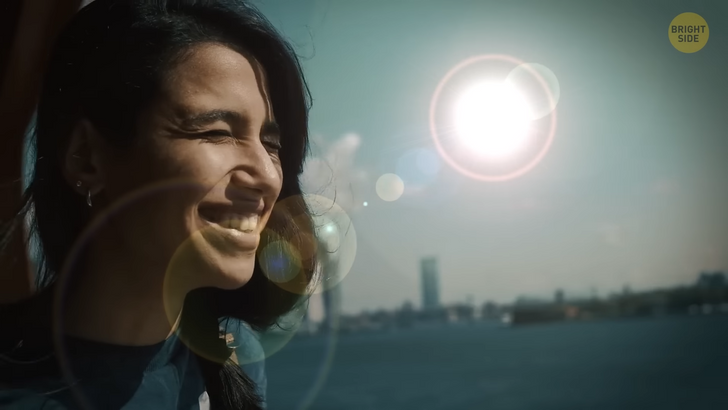
What about light? Exposure to some sunlight is important for our well-being, but you’ve surely heard this one since you were little, “Don’t stare directly at the sun!” Is there really any evidence that it affects our eyes, or is it just another myth?
Turns out it’s indeed dangerous. When you stare at the sun for an extended period, ultraviolet light enters your eyes. It then gets through the internal lens onto the retina and reaches the back of the eye. When this light-sensitive tissue is exposed to UV rays, it can get damaged. You’ll end up seeing spots for longer than just a few seconds or even have permanent eyesight damage. This process can happen quickly, even in just a few seconds of direct sun gazing.

